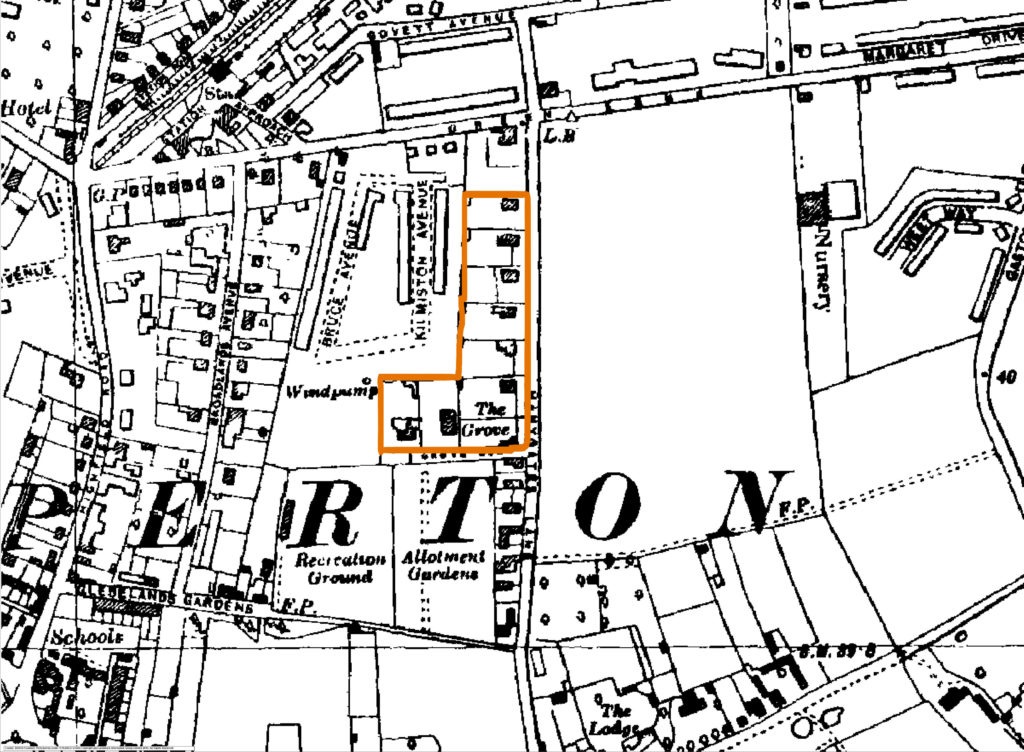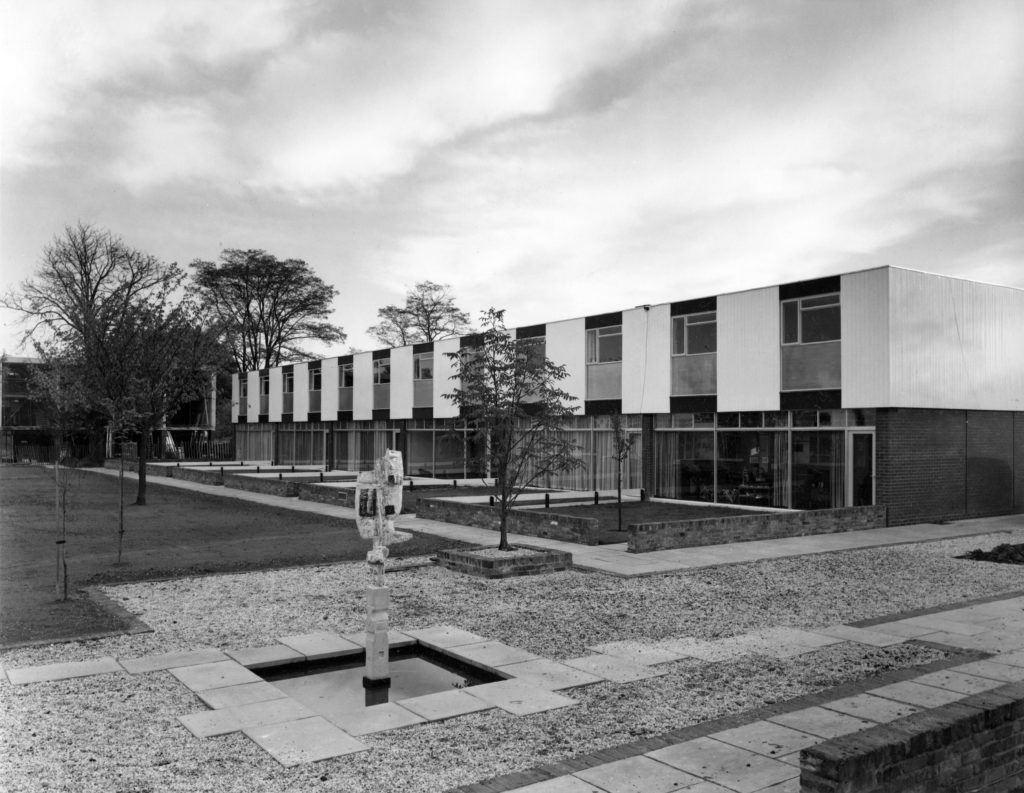The land where Manygate Lane Estate now sits developed from medieval agricultural fields, to lush Victorian villas, and then into a swinging 1960s housing experiment that attracted several famous residents.
Pre-modernism
The land on which Manygate Lane Estate was built was once part of Shepperton Field, the largest of the medieval open fields in the area, owned by James Scott, Duke of Monmouth, who owned numerous parcels of land both north and south of the Thames in 17th century.

In the late 19th century, the Lindsay Estate — owners of Shepperton’s large Manor House on the bank of the Thames — built a group of substantial detached villas on this agricultural land. The northern end of the road at that time was known as Villa Road. One example of the more prominent Victorian villas was called Fernleigh; it was described as having 3 reception rooms, a kitchen, a scullery and a conservatory on the ground floor, with 4 bedrooms, bathrooms and boxrooms above.
In 1963, the Lyon Group purchased the villas on the site, which had been held on 99-year leases, from the Lindsay Estate. The Victorian villas were subsequently demolished to make way for the current Manygate Lane Estate. A substantial brick boundary wall from the Lindsay Estate period (and the even earlier nursery land) still forms a large section of the present-day wall to the west and north sides of the site. At the southern end of the estate is a single gate pier to the west of 34 Grove Road; this pier made the original entrance point to the former Grove House.
The Lyon Group* was operated by Ronnie Lyon and had previously specialised in modern light industrial buildings such as the cargo storage facility at Heathrow Airport. Manygate Lane Estate was the second venture into domestic building by the Lyon Group; the first being the Wheatlands Estate in Heston near Hounslow, London in 1963.
Construction
Manygate Lane Estate was built in phases between 1964-65 by the Lyon Group and architect Emanual Shoolheifer (often credited erroneously as ‘Edward Schoolheifer.’) Phases 1 and 2 and the north terrace in Phase 3 were all built in the modernist style, one of the few British experiments in modernist private sector estate housing.

The design element of the estate combines a stark simplicity and the use of modern materials such as aluminium and glass. The 80 terraced houses are grouped around three linked quadrangles, traffic-free shared open spaces with extensive landscaping. Garages and parking spaces are separated from the pedestrianised greens and access ways. This separation uses some of the concepts of the American Radburn idea of residential layout design pioneered in the USA two or three decades earlier. The influence of this architectural style is evident in other private housing schemes of the late 1950s and early 1960s such as the Span estates by Eric Lyons at Blackheath, London; Ham Common, Surrey; and New Ash Green, Kent. Span housing sites were quickly recognized for their innovative modernist design and the quality of their living environments.
The Manygate Lane Estate is the only example of domestic modernist architecture from this period in the district of Spelthorne. Built to a high specification, the homes at Manygate Lane Estate were originally sold for £7,695 each, a considerable sum at a time when the average price for a similar house in London was £3,500.
Famous Residents
Perhaps it was the estate’s proximity to nearby Shepperton Studios. Or because Shepperton was just across the river from fashionable Weybridge, where three Beatles bought grand homes after achieving super-stardom. But one thing is clear: the estate’s progressive architecture was a big draw. Manygate Lane Estate became home to some big names during the swinging 1960s-70s.

Famous residents who lived on the estate:
- Tom Jones — See photo above, taken in Tom Jones’s house in 1966. Read an article about the current homeowners.
- Marlon Brando — Short-term resident while he filmed Superman at Shepperton Studios in 1977. Some rumours suggest the studios owned a house on the estate and loaned it to film stars while the stars were in production on the studio lot. Who else might have stayed on the estate?
- Julie Christie
- Dickie Valentine — British crooner who had many top ten and two #1 hits during the 1950s. Around the time he moved onto the estate in 1966, he had partnered with Peter Sellers on the sketch show The Dickie Valentine Show. Valentine’s untimely death in a car accident in 1971 was said to inspire another Shepperton resident — author J.G. Ballard — to publish Crash in 1973.
* The Lyon Group responsible for Manygate Lane Estate was not, confusingly, affiliated with Eric Lyons, the British architect famous for his own 1960s modernist housing projects known as Span Housing.
